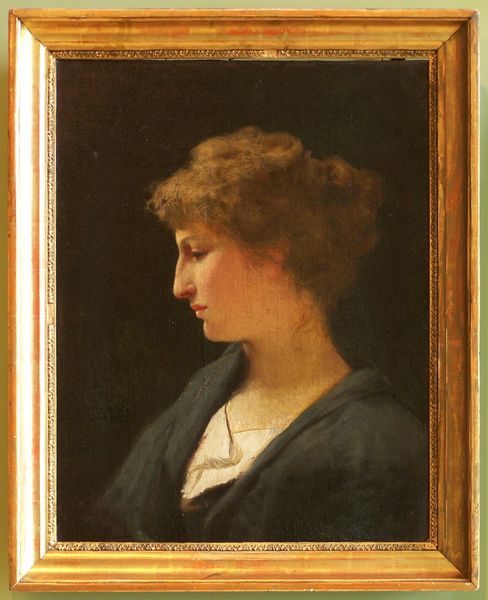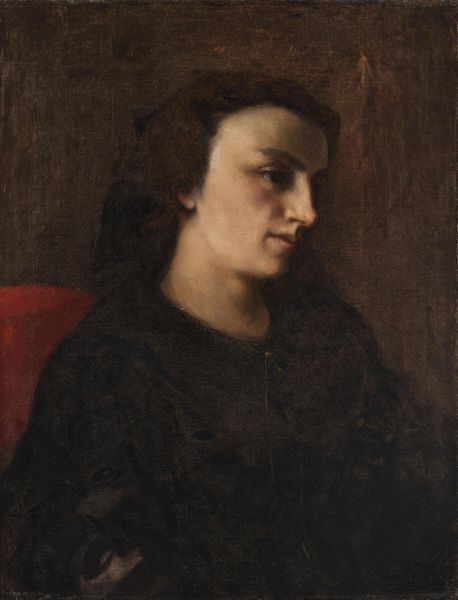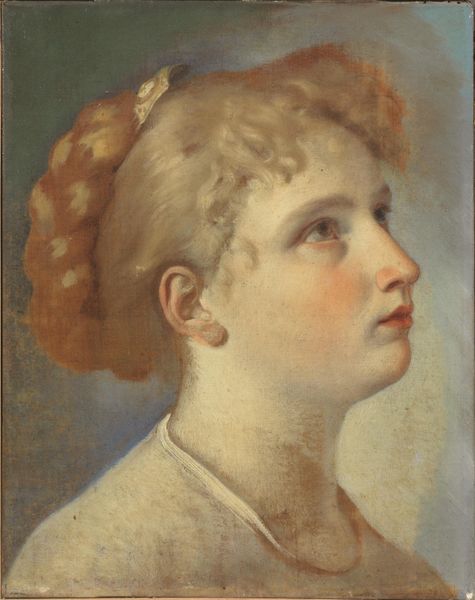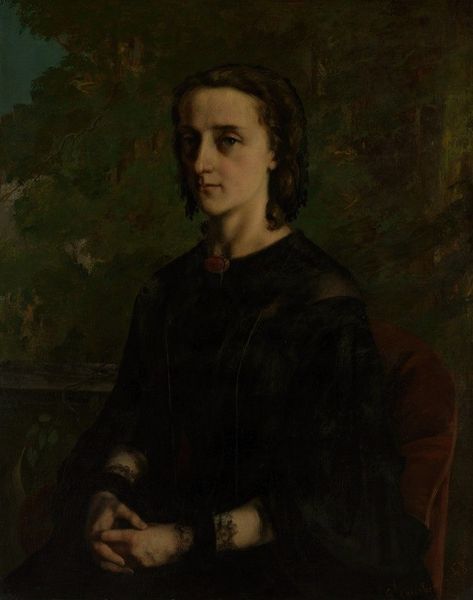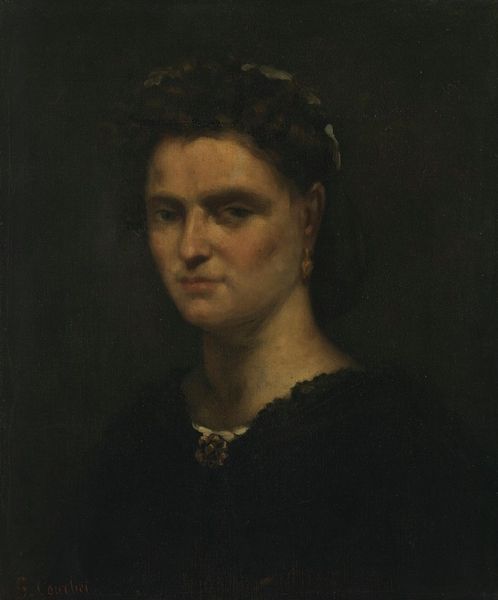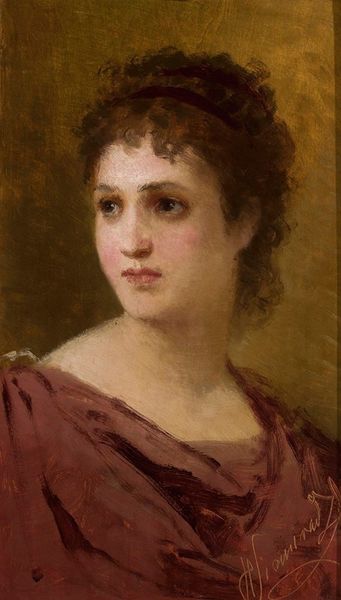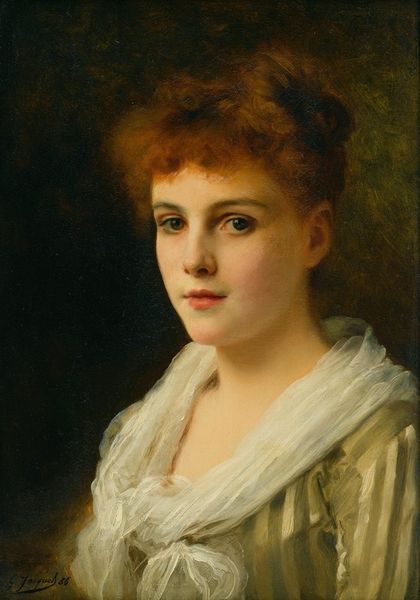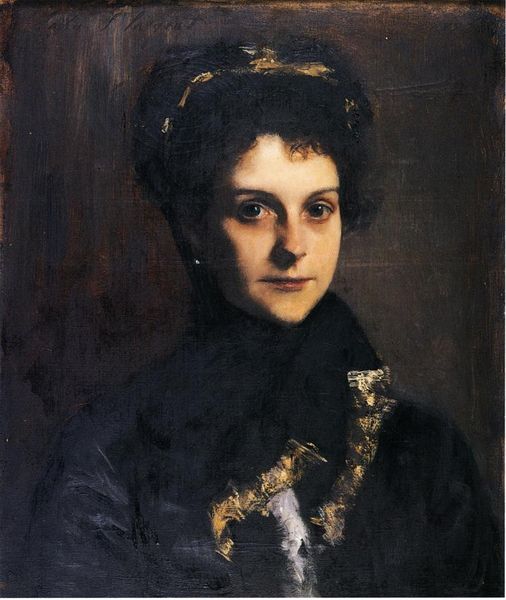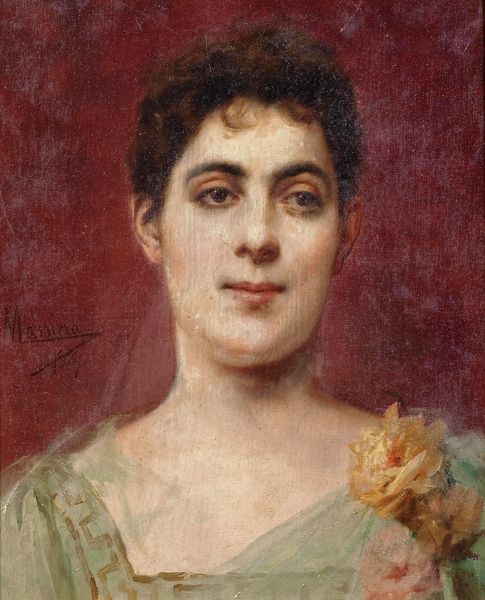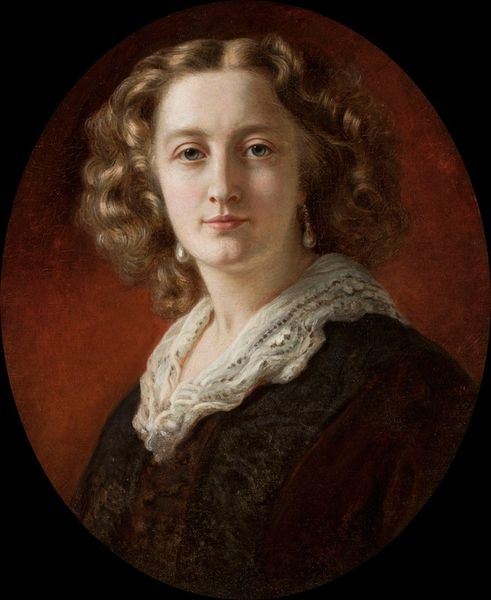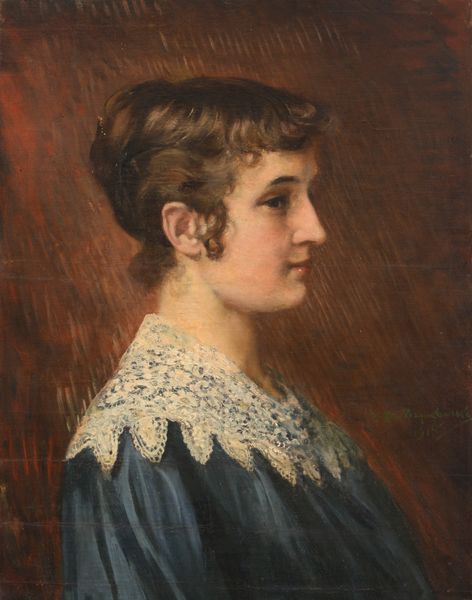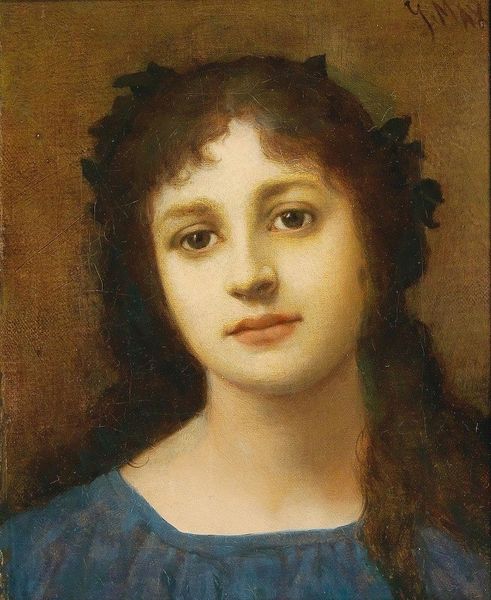
Dimensions: 24 x 20 7/8 in. (61 x 53 cm)
Copyright: Public Domain
Curator: Let’s turn our attention to Dennis Miller Bunker’s portrait of Eleanor Hardy Bunker, painted in 1890. You’ll find it here at the Metropolitan Museum of Art. Editor: It strikes me immediately as having a very controlled, almost subdued mood. The dark background really throws her face into stark relief. I’m drawn to the way her garment's texture disappears into the background. Curator: Right, and that subdued feeling is heightened, I think, by the constraints placed on women in the late 19th century, especially within upper-class societal expectations. Consider also the narrative that these portraits perpetuated about idealized femininity: docile, reserved, and virtuous. Editor: You’re spot on, I'd like to think more on what these portraits were physically composed of as well, namely, how portraits like this one required collaboration between the artist, pigment makers, and eventually their middle-class owners to create. We shouldn’t discount how the choice of oils contributed to a smooth, almost porcelain-like depiction of her skin. It really elevates her perceived status, doesn’t it? Curator: Indeed! And let’s also consider the golden laurel wreath. The subtle inclusion speaks volumes about the sitter’s aspirations and, more broadly, the societal pressure to achieve. Is it personal achievement or beauty, though? Her direct gaze seems to question the very nature of that pursuit. There is a tension there, isn’t there? Editor: Yes, absolutely. Thinking about those fine details such as the use of gold and classical garb... I find myself pondering on the class dynamics involved. Was gold leaf used to achieve that laurel crown, or was it ochre mixed meticulously by an artist? The material speaks to a desire for timeless value and worth but that the illusion can be skillfully reproduced on a relative budget. Curator: I find myself returning to Eleanor’s expression. It feels both poised and unsettling, reflective of the confined yet quietly defiant spirit of many women in that era. It offers us insight into that intersectional experience of being a woman of means within the rigidity of the time. Editor: It's remarkable how much the artist's technique contributes to that effect, a testament to the labour that translates ideals and social forces into such a delicate depiction, and the dialogue we can generate as a result. Curator: Thank you for providing that analysis! Editor: Thanks!
Comments
No comments
Be the first to comment and join the conversation on the ultimate creative platform.
